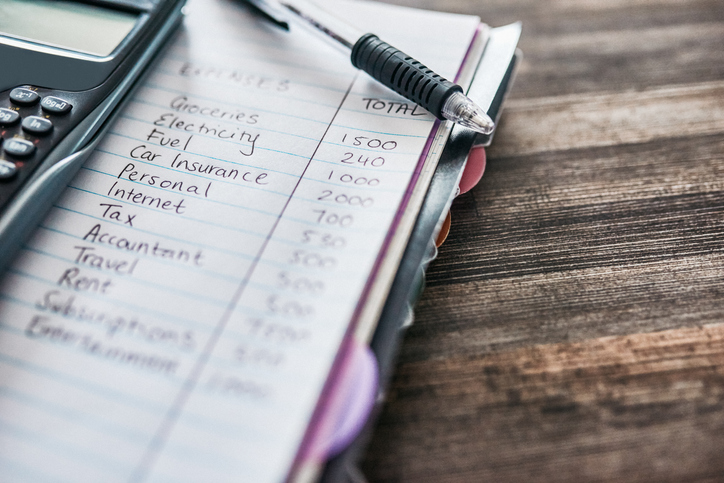Living with Chronic Pain
How to Make and Stick to a Household Budget

What is a household budget?
A budget is a document that shows a person’s expected income and expenses for a certain time period. Creating and sticking to a household budget helps ensure that any money earned is more than money spent. A budget also provides a blueprint for eliminating debt or increasing savings.
Working with a budget is essential for individuals with chronic pain; income is often affected by lost wages due to missed work days or reduced work hours. Also, various costs are associated with chronic pain management, including insurance deductibles, copays and out-of-pocket expenses. A budget helps to plan for those costs and to identify areas where spending can be reduced.
Creating a household budget
A budget can be created in a spreadsheet or even on a simple piece of paper. Various free online tools are available to help create a budget, including Every Dollar, the the Consumer Financial Protection Bureau's Spending Tracker, or the Federal Trade Commission's Budget Worksheet Form.
To create a budget, all expected income for the month, including income from jobs, government programs, disability benefits, or other financial support, should be documented.
Next, all expected expenditures for the month, including housing, utilities, groceries, medical expenses, transportation, other bills, debt payments, and other spending should be documented in separate categories.
The total expenditure amount is then subtracted from the total expected income amount. If the result is a positive number (surplus), the money can be budgeted for financial goals, such as paying off debt, creating an emergency fund or saving for large purchases. If the result is a negative number (shortage), looking for ways to reduce expenditures for the month or increase the income for the month is essential.
Since creating a budget is often a complex task, working on a budget when pain levels are at their lowest allows for optimal focus and mental clarity.
Tips for sticking to a household budget
Sticking to a budget can be a challenge, but these tips may help:
- Keep track of all spending throughout the month. Whether it is a large item (e.g., rent payment) or a small item (e.g., cup of coffee), document the purchase. Keep track of the amount of money left in each spending category throughout the month.
- Before making a purchase, check the amount of money available in that spending category. For example, before going to the grocery store at the end of the month, check to see how much money is left in the grocery spending category. Take a calculator or use a cell phone to keep a running total of the items in the cart. If $40 is left in the grocery budget, be sure to spend no more than $40.
- Say “no” to impulse buys. Before making a purchase, think about whether an item is a want or a need. If money is not in the budget for an item that is a want rather than a need, wait to buy that item until accumulated savings are available.
- Eliminate unnecessary costs. Consider whether all expenses are truly necessary or not. Common expenses that can be decreased or eliminated include streaming-service subscriptions, eating out, cable television or gym memberships.
- Use what is already in the home. For groceries, health/beauty products and cleaning products, use what is already available before buying new products.
- Find free or discounted alternatives to items when available. Instead of buying a book, check to see if it is available to borrow from the local library. Instead of buying a brand-new item, such as a piece of clothing or cell phone, see if a previously owned, less costly item is available for purchase.
- Use cash instead of credit or debit. It’s easy to overspend when using credit, and it can be tempting to spend more when using a debit card as individuals don’t physically see the amount of money being spent. Using cash can help one stick to a budget.
These tips can make it easier to stick to a household budget, which may help individuals pay medical expenses, pay debt and save for the future.
For more information, visit Consumer.gov at https://www.consumer.gov/articles/1002-making-budget#!what-it-is
or
ConsumerFinance.gov at https://www.consumerfinance.gov/about-us/blog/budgeting-how-to-create-a-budget-and-stick-with-it/.


















